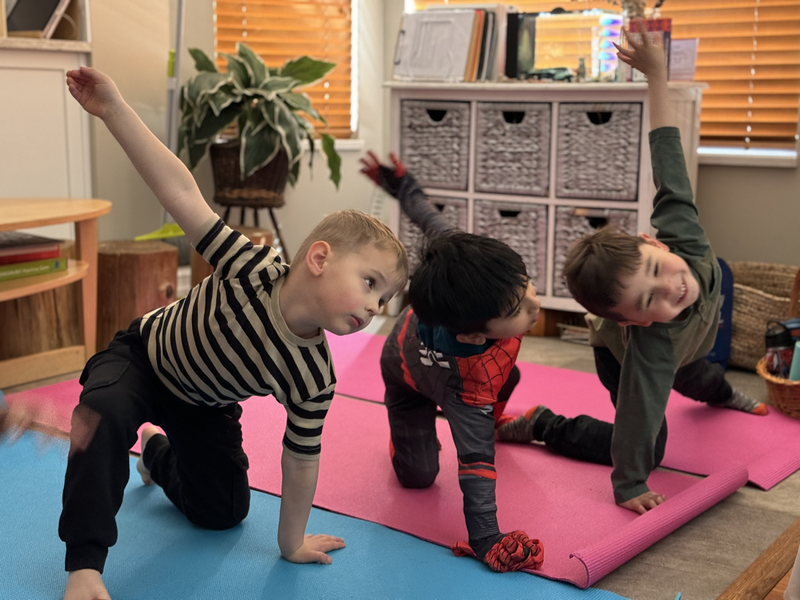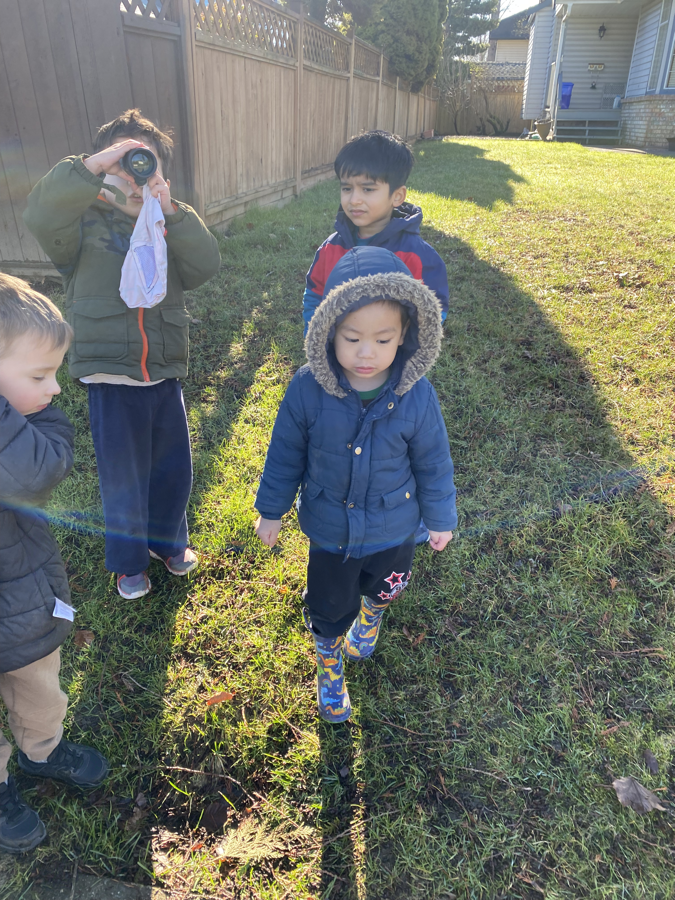|
Falling snow never fails to fascinate most of us. Is it for ...
We can try on our own and enjoy the cold sensation of a delicate flake melting on our tongue. We are mesmerized by the sight of a snowflake falling from the sky and landing on various parts of our bodies. When snowflakes fall on Emily's hair, we can see the intricate, unique pattern of the ice crystal. Based on our observation, we make connections of the snowflakes falling to the sense of rhythm. It is not like rain. Rain drips, pours, or beats a steady rhythm on the ground. Research says we cannot hear falling snow; the pitch is too high. Does snow falling have rhythm? question comes into our mind. Vivaan attempts to exhibit the soft rhythm of snowflakes landing on the ground in a quiet environment. Do snowflakes have shapes or patterns? is another question we ask ourselves. This can be another learning experience about the qualities of different shapes. It is even a more hands-on experience to explore the shapes. We notice there three lines to each snowflake. We too explore the term symmetry. Each one of us draw (by squeezing glue out of the container) on three intersecting lines on a piece of paper. This way we map out our own snowflakes. Integrating science. technology, engineering, art and math (STEAM) is another way for us to explore snowflakes. Through this snowflake salt painting, we learn that snowflakes always have six sides. Felix skillfully exhibits precision in preserving snowflakes and its hexagonal symmetry. Pinching the salt to sprinkle on top of the layered glue until it is thoroughly covered. Snow is the way he draws meaning from this experience. We love to continue our journey to find patterns around us. Patterns help us understand change and that things happen over time. Patterns help us make predictions because we begin to understand what comes next. We also learn how to make logical connections and use reasoning skills. During this learning experience of describing the patterns, we come up with a question - Can we change patterns? We use the word pattern to refer to some (but not all) regularities. In early math, we discover static and dynamic patterns. We can say that static patterns are happy where they are. Dynamic patterns, more like songs, unfold over time. We attempt to emphasize thinking and communicating about patterns and the structures underlying them. By understanding patterns, we will be able to describe them, reproduce them, extend them, fill in missing elements, and create new patterns. Psychomotor skills contribute to our integral progress through the interaction of our body with the external environment. That allows a balance in the dimensions: motor, affective, cognitive, and social. We are always in constant movement because it is how we interact and know the world around us. Kindest,
Children & Friends.
0 Comments
Leave a Reply. |
No part of this publication may be reproduced, distributed, or transmitted in any form or by any means, including photocopying, recording or any other electronic or mechanical methods, without the prior written permission of the publisher.
Archives
July 2024
|













